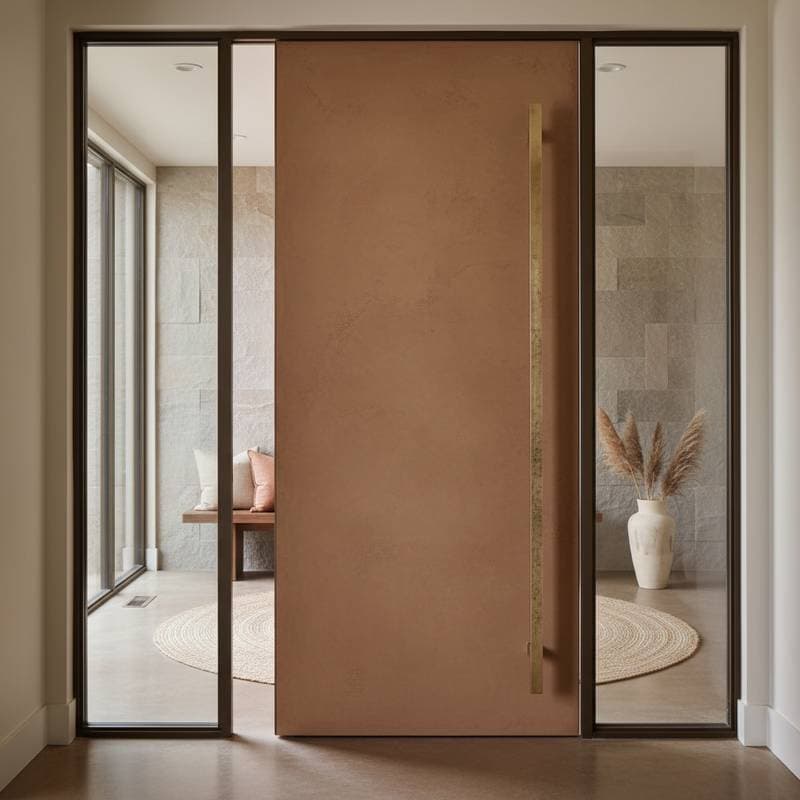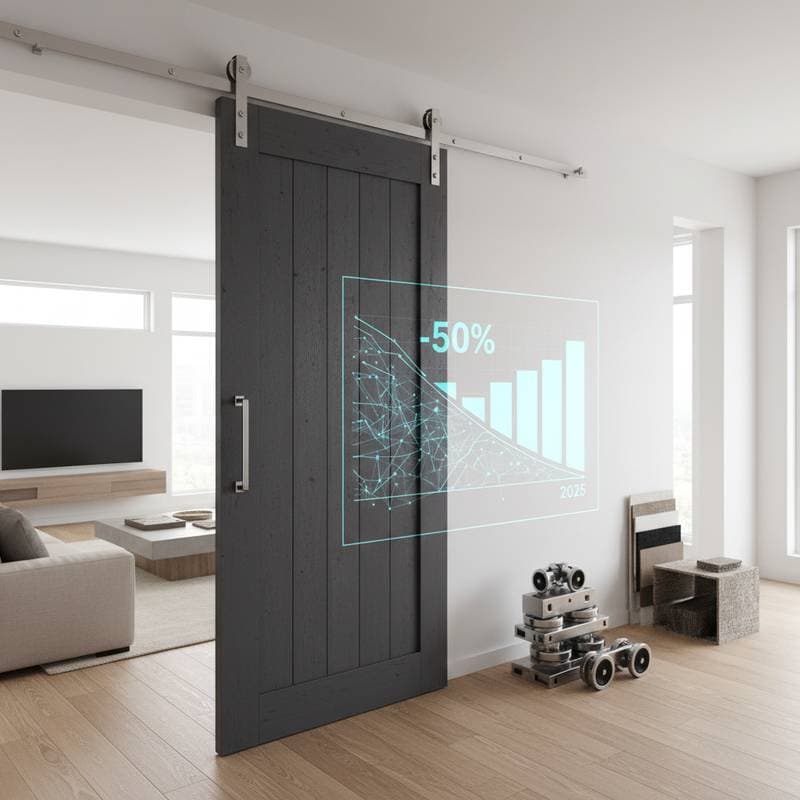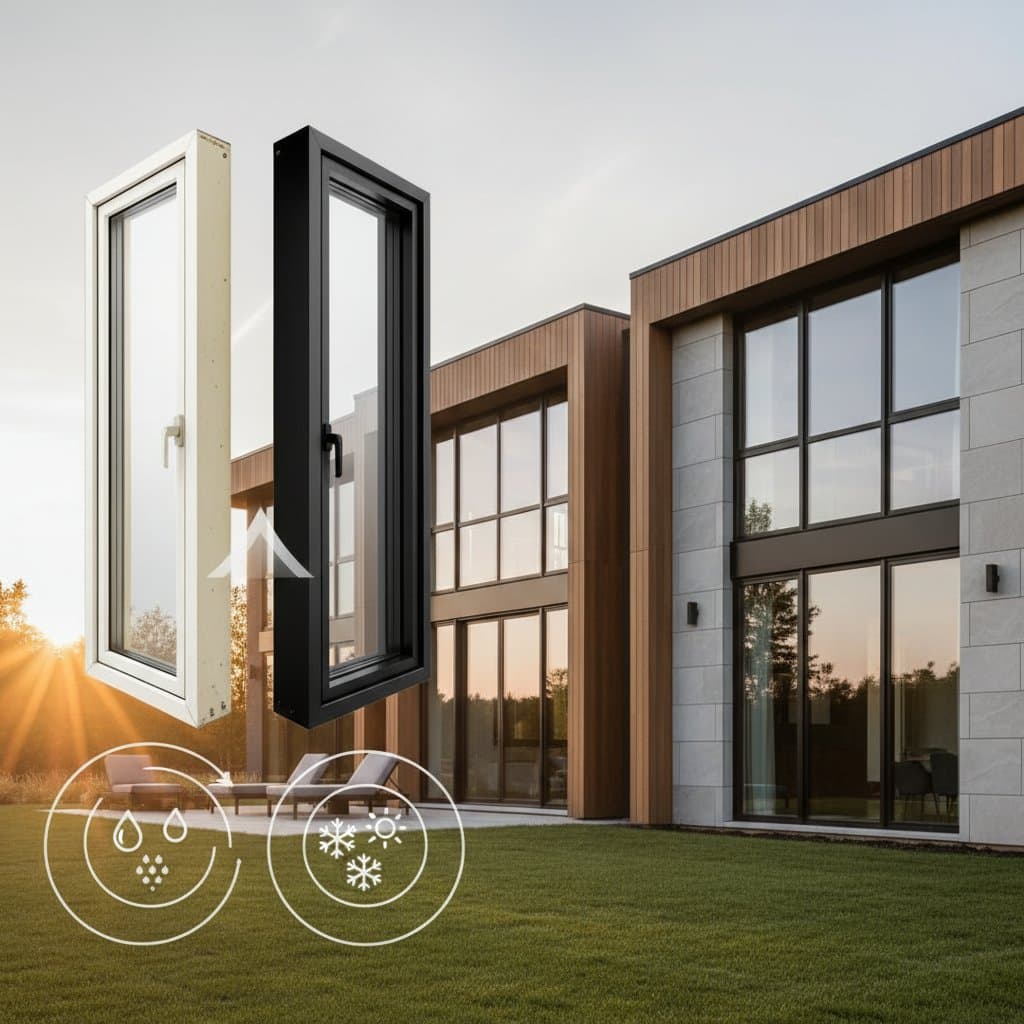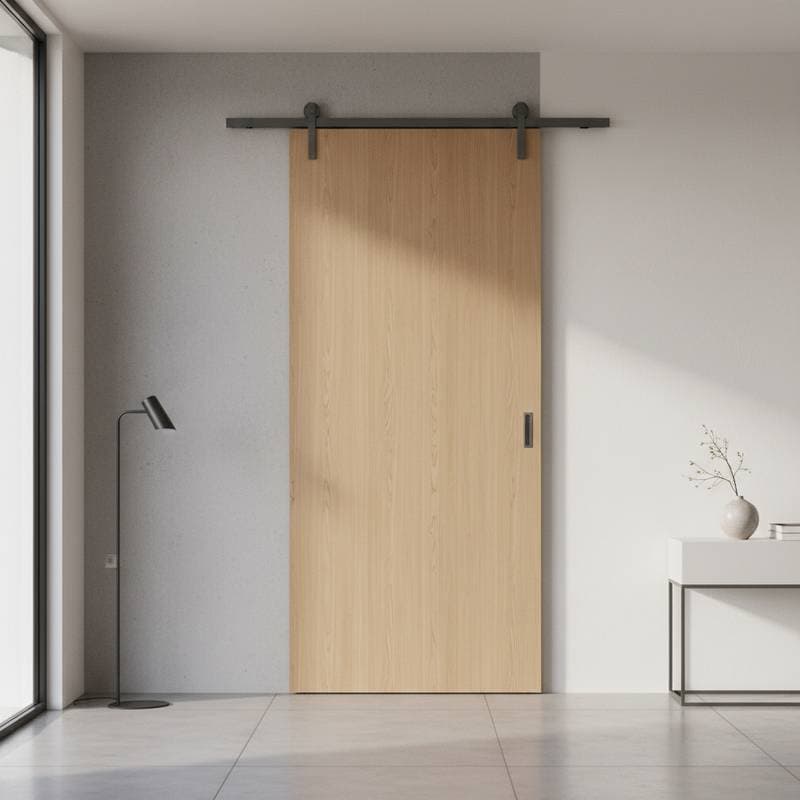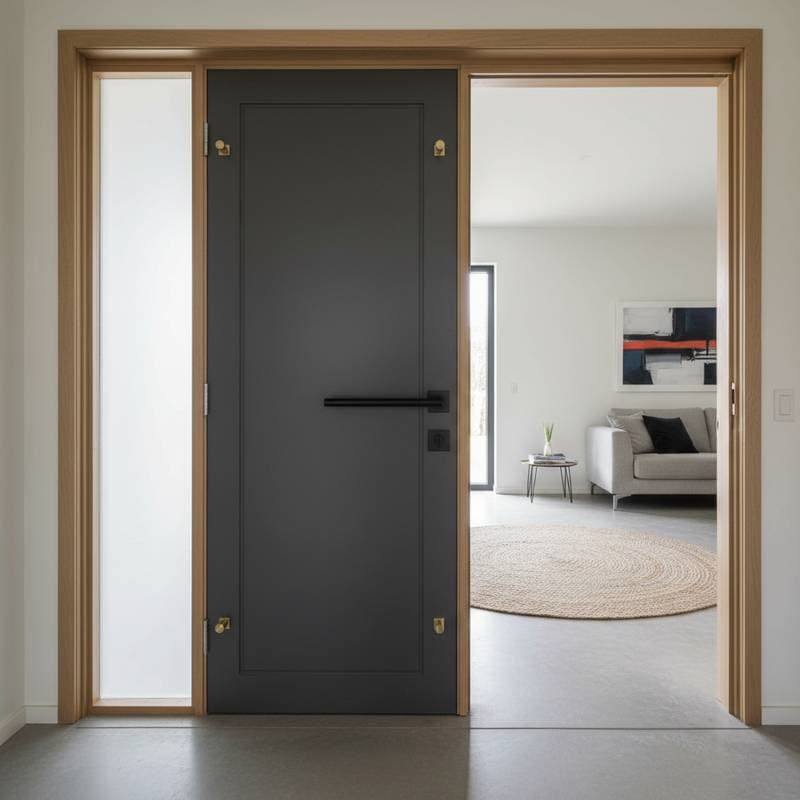Minimalist Brass: Japandi Doors Rule 2025 Entryways
The Japandi style has surged ahead as one of the most captivating design approaches for home exteriors, and entry doors are at the center of this movement. By blending Japanese restraint with Scandinavian warmth, Japandi entryways deliver a sense of tranquility while still feeling modern and welcoming. When paired with minimalist brass hardware, these doors make a bold yet subtle design statement. Brass adds a glow that feels timeless, and in a minimalist profile, it complements the serene geometry of Japandi design without overwhelming it.
This combination works because it balances simplicity with richness. Clean-lined wood doors in subdued finishes create a calming canvas, while the brass hardware adds just enough warmth and visual interest. The result is an entryway that feels both refined and approachable, with clear connections to nature.
Three Ways to Get This Look
Save Approach ($1,200 - $3,000)
- Choose a solid wood veneer or engineered wood door with a flat panel design. Opt for light oak or ash stains that highlight natural grain without heavy gloss.
- Select budget-friendly brass-coated handles in simple bar or lever shapes. A brushed finish hides fingerprints and requires less frequent polishing.
- Splurge on a slightly oversized handle or vertical pull, which creates a striking visual element even on an affordable door.
Mid-Range Approach ($3,000 - $7,000)
- Invest in a solid core wood door with horizontal or vertical slat detailing for subtle texture. Consider mid-tone finishes like smoked oak or walnut.
- Upgrade to solid brass hardware with a durable lacquer coating. Minimalist T-bar handles and long pulls add elegance while standing up to regular use.
- Consider adding a narrow sidelighted window with frosted or fluted glass to maintain privacy while enhancing the Japandi aesthetic.
Invest Approach ($7,000 - $15,000)
- Commission a custom wood door crafted from sustainably sourced timber, such as white oak or cedar, with hand-finished joinery. Incorporate asymmetrical paneling or vertical wood battens for a bold Japandi statement.
- Select unlacquered solid brass hardware that will patina naturally over time. Slim, elongated pulls or recessed handles provide a refined, architectural feel.
- Incorporate matching interior and exterior hardware, pivot hinges, and concealed locks for a seamless design. This approach emphasizes longevity and creates a bespoke entryway with long-term value.
Material and Finish Guide
- Windows: Pair Japandi doors with slim-framed windows in black or bronze finishes. Choose clear or frosted glass depending on privacy needs. Hardware should remain understated, with small, matte black handles or hidden latches that do not compete with the brass accents.
- Doors: Stick to natural wood species with subdued finishes. Light oak, ash, and walnut work well. Keep the profiles flat or lightly slatted to enhance texture without clutter. For hardware, minimalist brass handles in satin or unlacquered finishes are the defining feature.
- Siding: Japandi exteriors benefit from calm, natural textures. Vertical wood siding, fiber cement panels in soft grays, or smooth stucco in neutral shades all work seamlessly with brass accents.
- Trim and accents: Limit trim to thin, architectural lines instead of decorative moldings. Consider unfinished cedar soffits, black metal gutters, or stone bases to ground the design. Lighting fixtures in brushed brass or black steel reinforce the door hardware choice without competing.
Maintenance Reality Check
Minimalist brass is stunning but requires awareness of upkeep. Lacquered brass resists fingerprints and tarnish but can chip over time, especially in high-traffic entryways. Unlacquered brass develops a patina, which many homeowners appreciate for its organic character, but it may look uneven in humid or coastal climates. Regular cleaning with mild soap and water extends the life of either finish.
Wood doors demand seasonal care. Lighter stains show dirt more easily, while darker tones can fade if exposed to direct sun. Applying a UV-resistant sealant every few years helps preserve the look. For siding, natural wood requires staining or sealing, while fiber cement offers lower maintenance but less warmth.
Avoid These Mistakes
- Selecting shiny brass finishes that clash with Japandi restraint. High-polish brass feels too ornate and distracts from the minimalist aesthetic. Choose satin or unlacquered finishes instead.
- Mixing too many wood tones on the same façade. Japandi design thrives on harmony, so coordinate door, siding, and trim finishes carefully. If the door is light oak, keep siding in a complementary neutral such as soft gray or beige.
- Overloading the entry with decorative accents. Large wreaths, multiple planters, or ornate lighting fixtures dilute the clarity of Japandi style. Stick to one or two purposeful elements, like a single oversized planter or a simple brass wall sconce.
Color and Style Coordination
A Japandi-inspired palette should feel calm and natural. Here are five combinations that pair beautifully with brass hardware:
- Light Oak with Satin Brass: A fresh, airy combination that feels modern yet warm.
- Walnut with Unlacquered Brass: Rich, natural tones that age gracefully together.
- Ash Gray Door with Brushed Brass: A subtle balance of cool and warm tones.
- Charcoal Fiber Cement with Brass Accents: High contrast with a contemporary edge.
- Natural Cedar with Aged Brass: Organic and earthy, perfect for homes surrounded by greenery.
Planning Photography Checklist
Before making selections, homeowners should document their current exterior carefully. This helps both with personal planning and when working with contractors or suppliers. Capture the following:
- Current exterior photographs from all sides of the home and close-ups of the existing entryway.
- Details of architectural style, including rooflines, window proportions, and trim elements that will influence door design.
- Street-level views to understand how the entry fits with neighborhood character and any HOA guidelines.
- Climate considerations, such as direct sun exposure, heavy rain, or salt air, that can affect wood and brass finishes.
- A budget framework with high-priority upgrades identified, such as whether to prioritize the door itself or the hardware.
Bringing It All Together
Japandi doors with minimalist brass hardware create a sense of calm sophistication that feels both modern and timeless. The restrained palette, natural materials, and thoughtful detailing combine to produce entryways that are welcoming yet uncluttered. For homeowners, the beauty of this approach lies in its adaptability. Whether achieved with affordable veneers and coated hardware or with custom woodwork and patina-ready brass, the result remains cohesive and modern.
The key is to focus on balance. Let the door’s natural finish act as the focal point, with brass as the warm accent. Keep surrounding elements simple and coordinated, and avoid decorative clutter that competes with the clarity of the design. By approaching the project with a clear plan and honest understanding of maintenance and budget realities, homeowners can achieve entryways that embody both elegance and practicality.
Minimalist brass paired with Japandi doors is not just a fleeting idea. It is a thoughtful response to the desire for calm, enduring beauty. When executed with care, it transforms the everyday act of walking through the front door into an experience of harmony and welcome.


